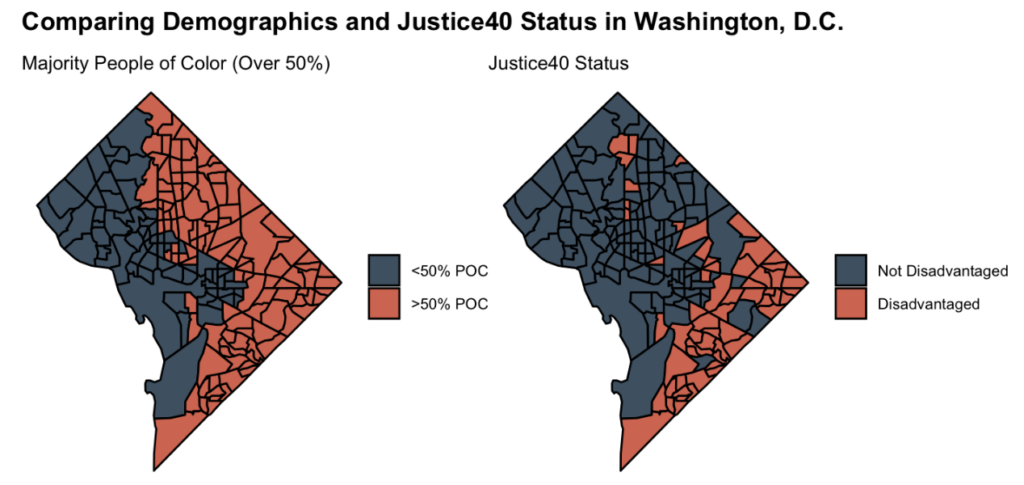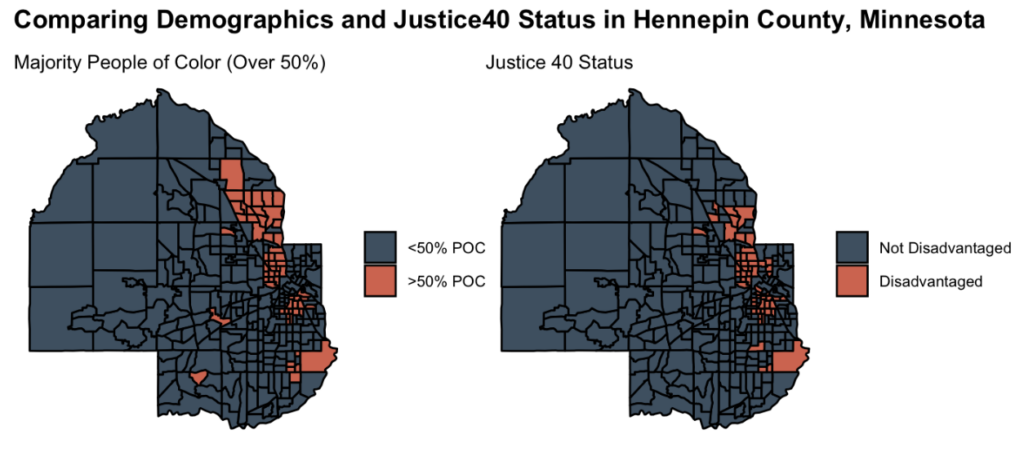Expanding the Climate and Economic Justice Screening Tool to better understand Justice40’s impact
The Massive Data Institute (MDI) is developing the Environmental Impact Data Collaborative (EIDC) to enable community groups, policymakers, and researchers to discover, access, merge, transform, analyze, visualize, and discuss data in ways that support them to make environmental policy more effective and just.
Early in the days of Joe Biden’s presidency, the administration issued an executive order asking the Council on Environmental Quality (CEQ) to develop the Climate and Economic Justice Screening Tool (CEJST) to identify disadvantaged communities in regard to climate and economic factors. Via its Justice40 initiative, the administration pledged that 40% of the overall benefits would go to the disadvantaged communities identified by the CEJST.
Consequently, the CEJST became a topic of great interest to many in climate and environmental justice communities because of its importance to the allocation of funds for energy, transit, housing, and climate policy to communities that have been burdened by historic pollution and inequality.
The CEQ choose not to consider race in its tool due to concerns over legal challenges, leading many community groups to question whether such a tool could adequately address the disproportionate impact of pollution and climate change on communities of color.
To help groups and researchers explore the impact of race, the EIDC makes it very easy to add racial and other demographic data into the workflow of the CEJST in a transparent and replicable manner. We use the American Community Survey in this analysis, as it is at this point the most detailed demographic look at census tracts in the United States.
For example, the EIDC tool enables us to explore the overlaps in majority-minority census tracts and Justice40 disadvantaged communities. (Majority-minority referring to census tracts that identify as a majority people of color.) And this analysis does not need to stop at demographics alone — through this readily accessible code in the data collaborative, users will also be able to merge the CEJST with other environmental data to understand the relationship with other indicators they care about in their community, such as air pollution metrics, or metrics not considered such as natural disaster risk.
To illustrate the power of the EIDC tool, the visualizations below demonstrate the impact of Justice40 disadvantaged status on communities of color varies by area. In the northeastern section of Washington, D.C., many diverse census tracts drop out of disadvantaged status due to income levels, despite being similarly burdened by climate and environmental factors. In contrast, Hennepin County, Minnesota has a greater overlap between highly diverse census tracts and census tracts identified as disadvantaged. The analysis demonstrates that there is likely not a one-size-fits-all answer to how Justice40 disadvantaged status intersects with racial demographics. Utilizing this kind of replicable analysis, EIDc users will be able to analyze for themselves how Justice40 impacts their area, making data-driven decisions on strategy and resource allocation.

A look at Washington, D.C.’s majority-minority census tracts compared to its Justice40 disadvantaged census tracts.

A look at Hennepin County, Minnesota’s majority-minority census tracts compared to its Justice40 disadvantaged census tracts.

